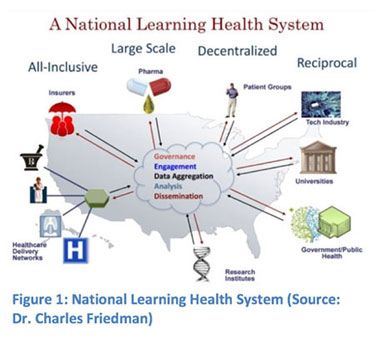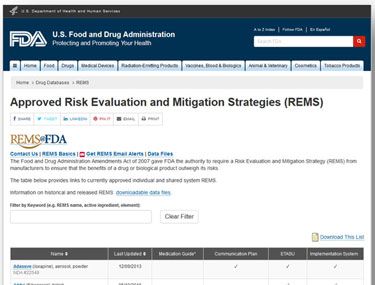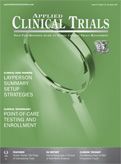Leveraging Health IT to Improve Drug Development
Applied Clinical Trials
Outlining the ways FDA is adopting electronic practices and initiating efforts to simplify the submission process for new drug and generic drug applications.
Health information technology-health IT-enables the comprehensive management of medical information and its secure exchange between patients and providers. Health IT has revolutionized healthcare at every stage of delivery. For instance, health IT has allowed patients to gain access to their medical records through online portals, as well as monitor their personal health using wearable biosensors that track heart rate, activity levels, glucose levels, and other measures. In addition, advancements in e-prescribing have helped to avoid dangerous medication interactions and medical errors. Researchers can mine administrative claims data to identify how treatment patterns impact patient outcomes and electronic health record (EHR) data to identify safety concerns. All of these advancements have boosted FDA’s ability to proactively monitor the safety of medical products after they have reached the market.

The FDA is working to adopt electronic practices in its own work by initiating efforts to simplify the submission process for new drug and generic drug applications. The agency wants to harness the power of health IT to enhance drug development and postmarketing surveillance. To support this goal, the FDA launched several initiatives that are meant to leverage a “Learning Healthcare System” (LHS), whereby scientific evidence gathered from one area of healthcare, such as clinical practice, feeds other areas, such as drug development.
FDA Health IT initiatives
Currently, most of the health data we access comes from two sources-clinical research and postmarketing adverse events reports. Both are critically important to making decisions about the safety and efficacy of new drugs, but they both have limitations. For example, clinical trials often are conducted in highly controlled settings with selective populations, and might not mirror the “real world” that many patients and healthcare providers experience. Moreover, current adverse event reporting may not provide enough detail to understand how a drug or other factors contributed to an event. To that end, the FDA has embarked on a number of initiatives exploring how to leverage health IT in the various phases of drug development. Here are a few:
• EHR guidance. In May 2016, the FDA published a draft guidance on: Use of Electronic Health Record Data in Clinical Investigations. This guidance offers the agency’s current thinking on facilitating the use of EHR data in clinical investigations, and promotes the interoperability of EHRs and other electronic systems that support clinical investigation.
• Source data capture from EHRs: Using standardized clinical research data. FDA is partnering with the University of California at San Francisco Medical Center on a project to demonstrate a single point data capture approach from an EHR to an electronic data capture (EDC) system for innovative breast cancer clinical trials. This project will demonstrate that the implementation of data standards and processes has potential to reduce the data collection burden and processing effort associated with clinical studies, while improving data quality, thus resulting in more efficient, higher quality studies that are easier and less costly to conduct. The project focuses on a randomized, Phase II breast cancer clinical trial entitled “I-SPY 2 TRIAL (Investigation of Serial Studies to Predict Your Therapeutic Response with Imaging And moLecular 2).” The I-SPY 2 study is a large-scale trial to facilitate the rapid testing of medical products for the treatment of breast cancer. I-SPY 2 involves a unique collaboration of scientists from National Institutes of Health (NIH)/National Cancer Institute (NCI), the FDA, the European Medicines Agency (EMA), regulated industry, and major cancer research centers. The proposed technology solution can be leveraged to support other therapeutic areas besides breast cancer (i.e., therapeutic area agnostic).
• Clinical Trials Transformation Initiative (CTTI). Additionally, the FDA and Duke University founded the Clinical Trials Transformation Initiative (CTTI), a public-private partnership whose mission is to develop and drive adoption of practices that will increase the quality and efficiency of clinical trials. To achieve this, CTTI conducts projects that target a specific aspect of clinical trials, explores the issues, and develops recommendations to address the issues. Currently, CTTI is sponsoring two ongoing projects:
- Mobile clinical trials: Mobile technologies can potentially increase the quality and efficiency of clinical trials by allowing people to participate remotely for some or all study activities, and by creating opportunities to develop novel endpoints. CTTI has implemented four projects to identify and address the challenges related to planning for and conducting clinical trials that use mobile technology. The four projects focus on legal and regulatory issues, validation and qualification of novel endpoints, scientific and technical challenges related to use of mobile devices, and stakeholder perceptions and concerns.
- Registry trial project: Information such as demographic, disease, and outcome data collected in clinical observational registries may overlap with data needed to support clinical trials. Integrating clinical studies within observational data registries could offer valuable opportunities to avoid duplicate data collection, increase operational efficiencies, and decrease clinical trial costs. The registry trial project aims to address the questions surrounding how to determine a registry’s suitability for conducting a registry-embedded clinical trial.
• Sentinel System. Monitoring the safety of its regulated products is a major part of the FDA’s mission to protect public health. The Sentinel System is the FDA’s national electronic system that has transformed the way researchers monitor the safety of FDA-regulated medical products, including drugs, vaccines, biologics, and medical devices. The Sentinel System enhances the FDA’s ability to proactively monitor the safety of medical products after they have reached the market and complements the agency’s existing Adverse Event Reporting System. Through Sentinel, the FDA can rapidly and securely access information from large amounts of electronic healthcare data, such as EHRs, insurance claims data, and registries, from a diverse group of data partners. Sentinel uses a distributed data approach, which allows the FDA to monitor the safety of regulated medical products while securing and safeguarding patient privacy in its existing data environment.

• Risk evaluation and mitigation strategy shared platform. The risk evaluation and mitigation strategy (REMS) shared platform currently in development will enhance access and usability of REMS, a strategy for managing the safe use of medicines that pose high or potentially high risks to patients. The REMS platform is being designed to facilitate the exchange of information to help carry out a range of activities that will help stakeholders meet REMS requirements. Once established, the FDA will work with drug companies to make their REMS compatible with these standards (to the extent feasible). REMS that are compatible with the standards will be referred to as “common platform REMS.” The goal of this initiative is to leverage electronic health data standards to standardize REMS and integrate them into health information technology.
The FDA is focusing on pharmacovigilance-monitoring drugs after they have been licensed for use to identify and evaluate previously unreported adverse reactions. In one ongoing project, the agency is collaborating with Google to identify whether search engine data (i.e., web search logs) can identify potential safety signals earlier than current FDA strategies.
The FDA signed a three-year research collaboration agreement with PatientsLikeMe, a large online patient network, with 500,000 members reporting on their experiences with more than 2,500 conditions. The joint project will explore how patient-generated health data (PGHD) can give new insights into drug safety. Under this collaboration, the FDA and PatientsLikeMe are systematically exploring the potential of PGHD to inform regulatory review activities related to risk assessment and risk management.
FDA’s commitment to drug safety and efficient drug development is woven throughout the drug life cycle. The initiatives outlined here, and others like it, are part of the agency’s commitment to linking and synthesizing real-world data from across the drug research and healthcare landscape. By supporting and participating in the electronic infrastructure to use real-world data, the FDA is helping to contribute to the development of a learning healthcare system that can identify safety issues in a timely manner and support more efficient and less costly drug development. As we move forward, the FDA welcomes input from its stakeholders to help the agency identify opportunities and refine its policies.
Mary Ann Slack is Deputy Director, Office of Strategic Programs, Center for Drug Evaluation and Research (CDER), Food & Drug Administration. Mitra Rocca is Senior Medical Informatician, Office of Translational Science, CDER.

Improving Relationships and Diversifying the Site Selection Process
April 17th 2025In this episode of the Applied Clinical Trials Podcast, Liz Beatty, co-founder and chief strategy officer, Inato, discusses a number of topics around site engagement including community-based sites, the role of technology in improving site/sponsor relationships, how increased operational costs are impacting the industry, and more.
Behind the Buzz: Why Clinical Research Leaders Flock to SCOPE Summit
February 7th 2025In this episode, we meet with Micah Lieberman, Executive Conference Director for SCOPE Summit (Summit for Clinical Ops Executives) at Cambridge Innovation Institute. We will dive deep into the critical role of collaboration within the clinical research ecosystem. How do we bring together diverse stakeholders—sponsors, CROs, clinical trial tech innovators, suppliers, patients, sites, advocacy organizations, investors, and non-profits—to share best practices in trial design, program planning, innovation, and clinical operations? We’ll explore why it’s vital for thought leaders to step beyond their own organizations and learn from others, exchanging ideas that drive advancements in clinical research. Additionally, we’ll discuss the pivotal role of scientific conferences like SCOPE Summit in fostering these essential connections and collaborations, helping shape the future of clinical trials. Join us as we uncover how collective wisdom and cross-industry partnerships are transforming the landscape of clinical research.
FDA-Approved Gene Therapy Beqvez Shows Sustained Efficacy, Safety in Long-Term Hemophilia B Trial
April 17th 2025Beqvez (fidanacogene elaparvovec), an FDA-approved one-time gene therapy for hemophilia B, demonstrated sustained factor IX expression, low bleeding rates, and a favorable safety profile over long-term follow-up.